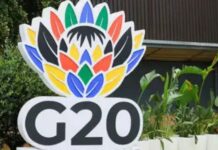
In a significant milestone for India’s conservation efforts, the Cold Desert Biosphere Reserve in Himachal Pradesh has officially joined UNESCO’s World Network of Biosphere Reserves. This recognition, announced during the 37th session of the Man and the Biosphere (MAB) Programme’s International Coordinating Council from September 26 to 28, 2025, in Hangzhou, China, highlights one of the world’s most unique and fragile ecosystems. This designation marks India’s 13th site on this distinguished list, reinforcing the country’s commitment to balancing ecological preservation with sustainable development.
A Jewel in the Trans-Himalayas
Covering an area of 7,770 square kilometers, the Cold Desert Biosphere Reserve features a stunning mix of windswept plateaus, rugged mountains, deep gorges, and glacial valleys. Located in the remote Lahaul-Spiti district, it serves as a living laboratory of survival, with altitudes ranging from 3,300 to 6,600 meters. The reserve includes several important protected areas, such as Pin Valley National Park, Kibber Wildlife Sanctuary, the peaceful Chandratal Wetland, and the high-altitude Sarchu plains. This diverse landscape is home to species that have skillfully adapted to the extreme cold and dry climate, making it one of the coldest and driest ecosystems in the World Network of Biosphere Reserves.
A Haven for Rare Wildlife and Flora
The UNESCO recognition is especially important for conserving the reserve’s biodiversity. This region is a stronghold for the iconic snow leopard, its flagship species, which thrives here due to a strong prey base of more than 800 blue sheep. Other notable residents include the elusive Himalayan ibex, the Himalayan wolf, the red fox, and a wide variety of birds, including over 100 species such as the golden eagle and bearded vulture.
The unique plant life of the cold desert is equally fascinating. Despite the harsh conditions, the area is home to an impressive 655 species of herbs, 41 shrubs, and 17 tree species. Among them are 14 endemic plants and 47 medicinal varieties, many of which play an important role in the traditional Sowa Rigpa/Amchi system of Tibetan medicine. This recognition will likely enhance scientific research and provide a vital platform for international collaboration in studying and protecting this precious heritage.
Happy to share that during the 37th Session of the UNESCO’s International Coordinating Council – Man and the Biosphere – held today, India’s Cold Desert Biosphere Reserve, Himachal Pradesh, has been included in the World Network of Biosphere Reserves.
— Bhupender Yadav (@byadavbjp) September 27, 2025
With this addition, India… pic.twitter.com/wtPOwRyOoM
Community-Led Conservation
Beyond its ecological wealth, the Cold Desert Biosphere Reserve is notable for its strong model of community-led conservation. About 12,000 people live in scattered villages within the reserve’s transition zone, engaging in traditional livelihoods such as pastoralism, yak and goat herding, and farming. Their ancestral knowledge, preserved through Buddhist monastic traditions and community councils, is crucial in managing the fragile alpine resources. This harmonious relationship between local communities and nature is fundamental to the biosphere reserve model and played a key role in its UNESCO recognition.
Global Recognition, Local Impact
Union Environment Minister Bhupender Yadav praised the inclusion as a sign of India’s commitment to biodiversity conservation. Similarly, Himachal Pradesh Chief Minister Sukhvinder Singh Sukhu noted that this recognition will draw responsible eco-tourism and enhance climate resilience efforts.
The designation goes beyond being a mere title; it acts as a catalyst for improving global research partnerships, establishing sustainable livelihood initiatives for the local community, and highlighting the urgent need to protect delicate mountain ecosystems from the growing pressures of tourism and climate change. It firmly places the Spiti Valley and its unique cold desert on the global conservation map, ensuring its survival for future generations.




